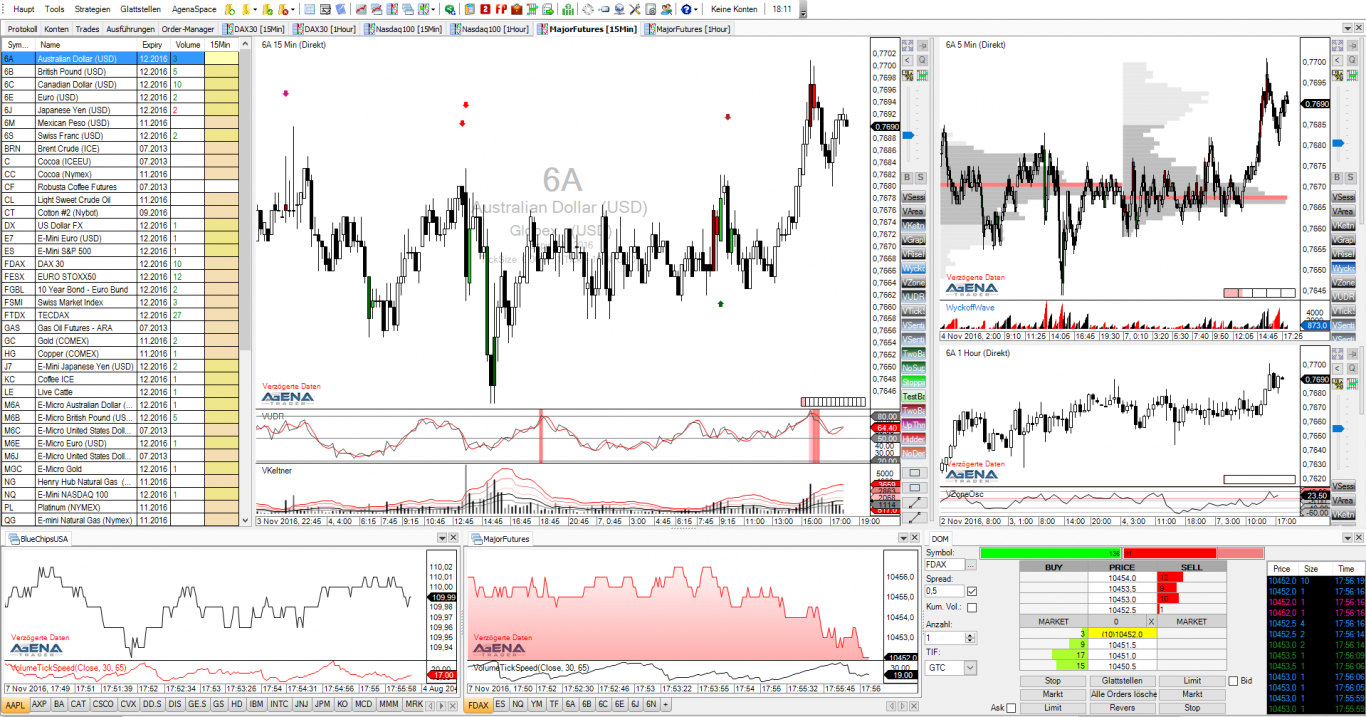Why Retail Traders Can hardly Get an Edge…and How to Change It
Advanced technology has changed the rules of the game–making retail traders’ skills less effective, if not altogether obsolete.
There’s a high probability that both your trading skills and technology are making you an easy target for the more technologically-advanced trader–that is, the professional trader. The inherent qualities of your trading methodology, platform, indicators, or charts have not changed. It’s just that their operational environment has been transformed to such an extent that you are not applying your skills to the wrong game.
Professional-grade skills, based on the new technologies they use, are continually changing the rules of the game, and most retail traders just don’t see it. If you are like most retail traders, you are fighting yesterday’s battle in today’s markets.
This makes you an easy target–something that professionals want, as it increases their profit potential multifold.

Many Retail traders often don’t realize that the platforms made available to them are so outmoded, that by simply using them, they give professional traders an edge.
In the futures industry, most brokerages offer platforms with lots of bells and whistles–market analytics, indicators, charts, and even fully automated trading software. Retail traders either trade manually using “sophisticated” software, or they allow a machine to do all of their thinking and trading for them. Both are losing propositions.
Professionals integrate “smart technologies” that both learn and assist them based on their pre-defined strategies and parameters. Professionals use responsive semi-automation, which functions more as an intelligent (thinking) machine in contrast to a non-intelligent “tool.”
The irony is that most retail traders–in their “main” professions–would never tolerate outdated technologies, software, or apps. Yet in the markets, they are willing to sacrifice competitiveness and profits for lower prices and a feeling of comfortable familiarity.
This tendency marks one critical difference between the professional and retail trader.
As a retail trader, you are not “forced” to conduct R&D, nor are you forced to adopt technological innovations that are disrupting the business environment.
Without the burden of such inconveniences, retail traders can stay within their comfort zones. They may lose money consistently, but they don’t have to risk venturing into unknown territory…even if such a venture may lead to greater capacity and profit potential.
Essentially, the observation of such habits can only lead one to speculate that retail traders view trading as an expensive form of entertainment rather than a business–another critical difference between professionals and retail traders.
How to get a real edge in trading the markets
- Adapt your skills and technologies to the new market environment: There’s a popular saying whose origins are attributable to the 1987 film The Untouchables: “Never bring a knife to a gunfight.” Essentially, retail traders often do the exact opposite of this wise piece of street advice. As a result, they always get slaughtered. It doesn’t have to be this way. Just bring the right arsenal to the arena.
- Use semi-automated software: The concept is fairly easy to understand, but most people would make the erroneous assumption that “full-automation, which is commonly available, is the subsequent progression of semi-automated software. It is not. Semi-automation is a smart tool. Unlike fully-automated software, semi-automation expands rather than controls or confines a trader’s potential. This infographic illustrates how semi-automation far exceeds any manual trading process.
- Be willing to spend a little more money for a greater payoff in trading profits: This is the one factor that separates professionals from the retail crowd. Zero to little investment in technology = expensive losses in the market. Technologies with lots of bells and whistles and a fancy look are meaningless if they can’t help you profit. Here is a case study on users of Agena Trader software. Although not much more expensive than the average trading platform, Agena’s added value makes it stand apart from almost of all retail platforms.
- Be willing to upgrade your skills: progress is never a static phenomenon. To adapt to the new market environment, you need to learn how to use new technologies and to match your current skills to both the new environment and new technologies. In today’s markets, only the adaptive survive. But only the disruptive will truly thrive – AgenaTrader will help you.
Disclaimer:
Exchange transactions are associated with significant risks. Those who trade on the financial and commodity markets must familiarize themselves with these risks. Possible analyses, techniques and methods presented here are not an invitation to trade on the financial and commodity markets. They serve only for illustration, further education, and information purposes, and do not constitute investment advice or personal recommendations in any way. They are intended only to facilitate the customer’s investment decision, and do not replace the advice of an investor or specific investment advice. The customer trades completely at his or her own risk.


Leave A Comment
You must be logged in to post a comment.